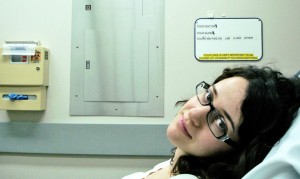
by Kelly Parkes-Harrison-Warwick
The 2,500-year-old Pythagorean theorem could be the most effective way to identify the point at which a patient’s health begins to improve.
For a paper published in PLOS ONE, Rob Froud from Warwick Medical School worked with his colleague Gary Abel from the University of Cambridge. They made the discovery after looking at data from ROC (Receiver Operating Characteristic) curves.
These curves were initially developed during World War II for the analysis of signals to help operators decide whether a blip on the screen was an enemy target or allied forces ships or aircrafts. In the 1980s, the curves were adopted by epidemiologists to help them decide at what point an individual has recovered from an illness.
“It all comes down to choosing a point on a curve to determine when recovery has occurred,” says Froud. “For many chronic conditions, epidemiologists agree that the correct point to choose is that which is closest to the top-left corner of the plot containing the curve.
“As we stopped to think about it, it struck us as obvious that the way to choose this point was by using Pythagoras’s theorem.”
The Pythagorean theorem states that in a right-angled triangle, the sum of the squares of the two right-angled sides is equal to the square of the hypotenuse (i.e the longer diagonal that joins the two right angled sides). This means that one can determine the length of the hypotenuse given the length of the other two sides.
“We set about exploring the implications of this and how it might change conclusions in research. We conducted several experiments using real trial data and it seems using Pythagoras’s theorem makes a material difference,” says Froud.
“It helps to identify the point at which a patient has improved with more consistency and accuracy than other methods commonly used.
“The moral of the story is that before you throw out the old stuff in the attic, just go through it one last time—as there may be something in there that is still relevant and useful,” Froud adds.
Source: University of Warwick








